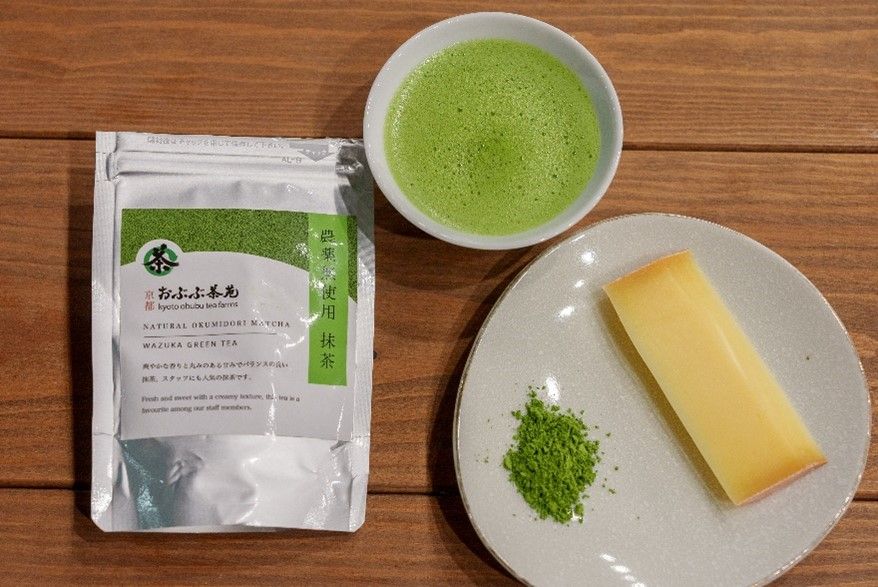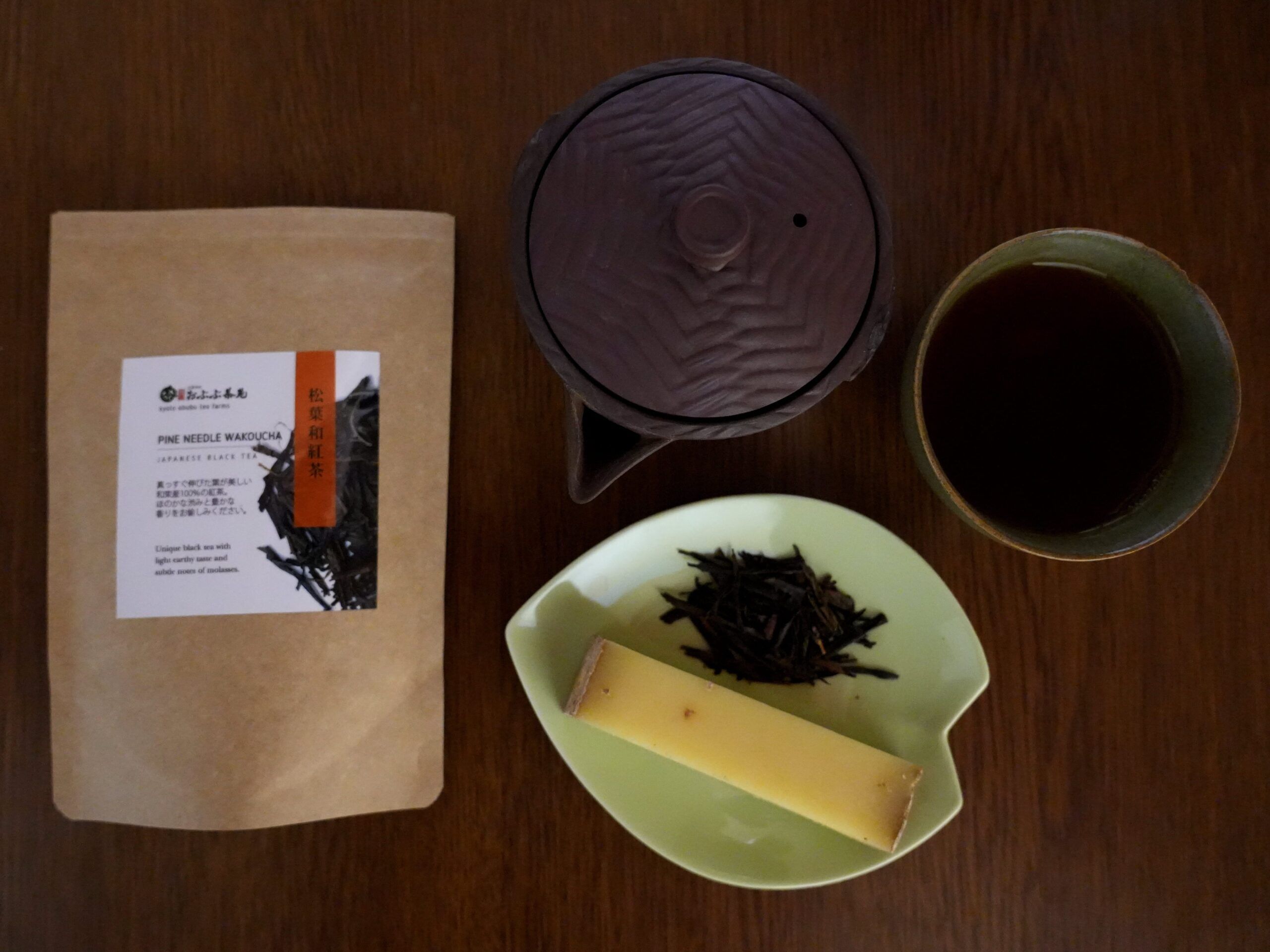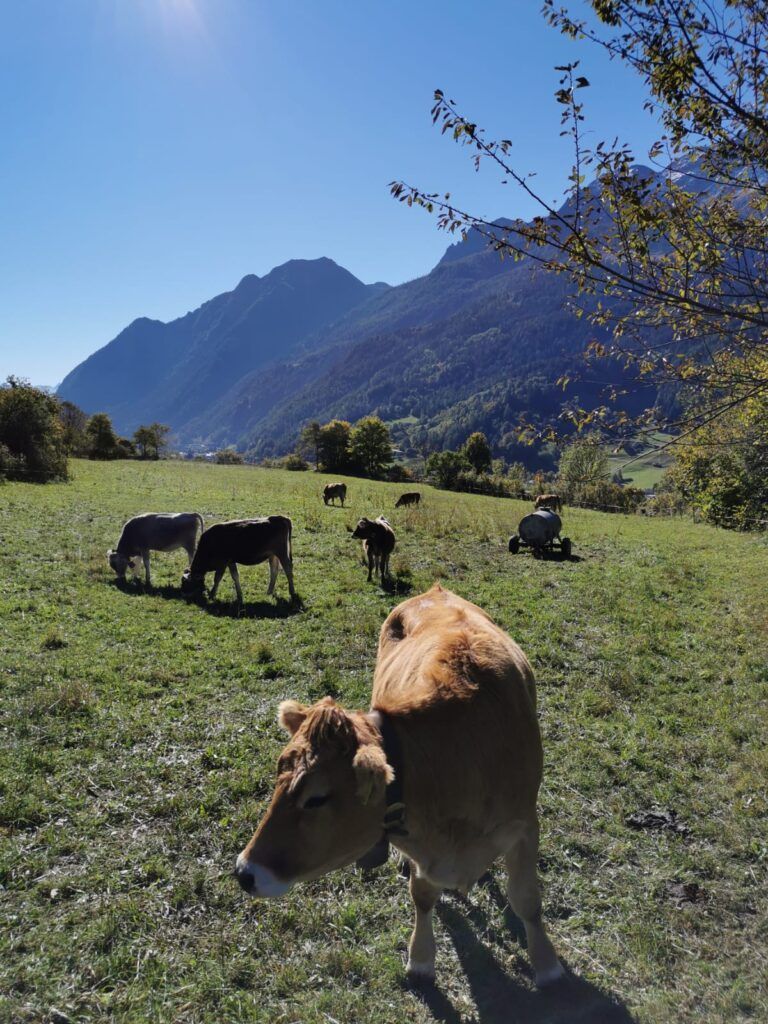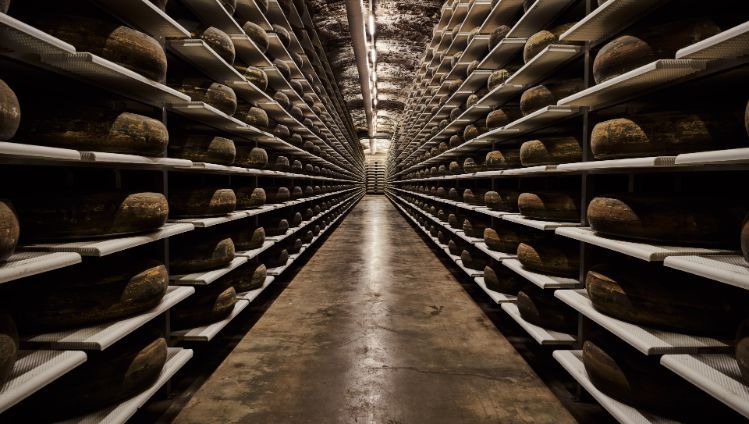Cooked pressed cheeses, like Comté and Gruyère, develop deep, caramelized flavors through careful aging, making them an exciting partner for a well-chosen tea. Let’s dive into the best pairings to enhance their savory-sweet complexity.
Abondance & Natural Okumidori Matcha
Why not swap out your wagashi for (w)Abondance ? This pressed paste cow’s raw milk cheese is from Haute-Savoie. The milk is first curdled in copper cauldrons before molding. In order to be authentificated as Abondance, the cheese needs to be matured on pine boards for a minimum of 100 days. Thanks to its terroir and through this process, it acquires a semi-hard texture and soft hazelnutty flavours which make it an accessible cheese to even the less cheesethusiasts. This sweetness makes it the ideal match with the savoury and velvety Natural Okumidori Matcha. Make sure to brew this ceremonial grade matcha with slightly lower temperature water (around 80°C) to allow its umami and vegetal notes to best shine through. As we like to say during tea tours, feel free to eat your sweet (or in this case your cheese) before, with or after your bowl of matcha.


Comté PDO & Pine Needle Wakoucha
Made in the Jura Mountains from cow’s milk, a single wheel of Comté weighs 40 kg and is controlled to ensure the taste adheres to the specifications of the PDO. Each wheel is attributed a mark out of 20 which determines the colour of the label (12 to 14 is brown and above 14 is green) or if it is discarded (under 12). With its honey and watermelon notes, Pine Needle Wakoucha heightens the Comté’s fruitiness. On the other hand, the creaminess and richness of the Comté offsets the Wakoucha’s slight astringency for an ideal pairing.


Gruyère PDO & Genmaicha
Gruyère is a well-known raw cow’s milk Swiss cheese that can be enjoyed anywhere between 6 to 24 months of aging. Its nutty and slight fruity flavours will evolve from quite tender and soft, to more intense aromas as the cheese is aged. These notes pair wonderfully with Genmaicha‘s characteristic toasted flavours. Genmaicha is an emblematic Japanese tea which mixes bancha tea leaves (bigger and lower on the bush) and toasted mochi rice. Icons of their respective fields, Genmaicha and Gruyère make for a winning combo!


Kaltbach & Suzume Kukicha
Aged in sandstone caves 15 meters below ground, Kaltbach is a cow’s milk cheese from Switzerland with a smooth and full-bodied character. Through its controlled process and maturation time, the Kaltbach develops aromas that make it a staff favourite at Obubu. This delicious cheese is perfectly combined with Suzume Kukicha, a roasted stem tea characterized by its smoked aroma and notes of apricot. For a an even better tasting experience, add some freshly cut fruit (like peach or もも) to balance the salty and creamy cheese and lightly roasted tea, with crunch, acidity and sweetness.


You might be wondering why many names of cheeses are followed by the letters “PDO”. The Protected Designation of Origin (PDO) is a label from the European Union which aims to safeguard specific denominations of products and the know-how associated with them.

Other labels with slightly different protection systems include Protected Geographic Indication (PGI) and Traditional Specialty Guaranteed (TSG). These geographic indications guarantee the authenticity of products, by assuring they are made in a specific designated area, and according to traditional techniques.
Just like with tea, each step of the process will affect the character of the final product : geology, topography, local flora, climate, process, aging, etc. This is why you can have two “same” cheeses that have quite distinct flavour palates, in the same way that you can have two Kabuse Sencha, for example, that taste different coming from seperate farmers.
– Alix (assistant manager #6)
